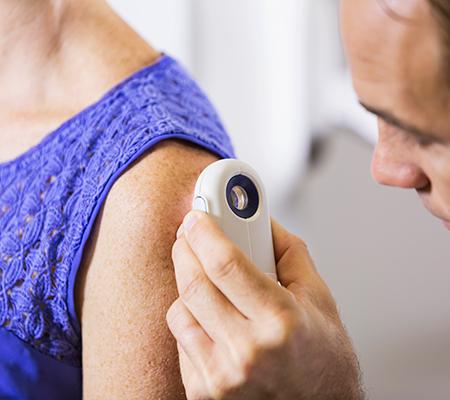
“Is this weird looking spot on my skin a skin cancer?”
That is a question that Dr. Rohit Sharma, a Marshfield Clinic Health System surgical oncologist is asked a lot since he has a special interest in cancers of skin and other connective tissues.
Sharma informs his patients that the lesions to be concerned about include any changing or persistent area that is present for more than two weeks, and has any of the following features:
- An ulcer
- An unexplained bruise
- A mass
- An area where there is more or less pigmentation than the surrounding areas
Next steps after finding a weird spot on your skin
Start by seeking medical advice. You should especially be concerned if the weird spot on your skin begins to:
- Itch
- Bleed
- Cause the skin to break down
You also should look for similar spots in other areas. “If there is one spot that is changing, it is actually more suspicious than multiple areas changing. If multiple areas are changing, it is most likely a rash,” Sharma said.
Most other skin conditions go away after several weeks, he said. “Skin cancer instead will persist and/or get worse – it will itch more, bleed more or get bigger.”
To help monitor if a spot is changing over time, Sharma suggests taking periodic pictures of the spot, and comparing it over time, to see if it changes. He warns that some of the changes to watch for can be other skin conditions.
What to tell you doctor
If you are worried about weird spots on your skin, talk to your doctor.
“If there is clinical suspicion based on your history and physical exam, then a biopsy is a proper way to diagnose skin cancer,” Sharma said.
When you see a doctor, be prepared to answer some common questions that you will likely be asked including:
- When did the lesion appear?
- How long has it been there?
- Has it progressed?
- Were there any issues or trauma that led to the lesion?
- Have you had skin cancer before?
For more information about skin cancer, talk to your doctor.






Leave a Reply